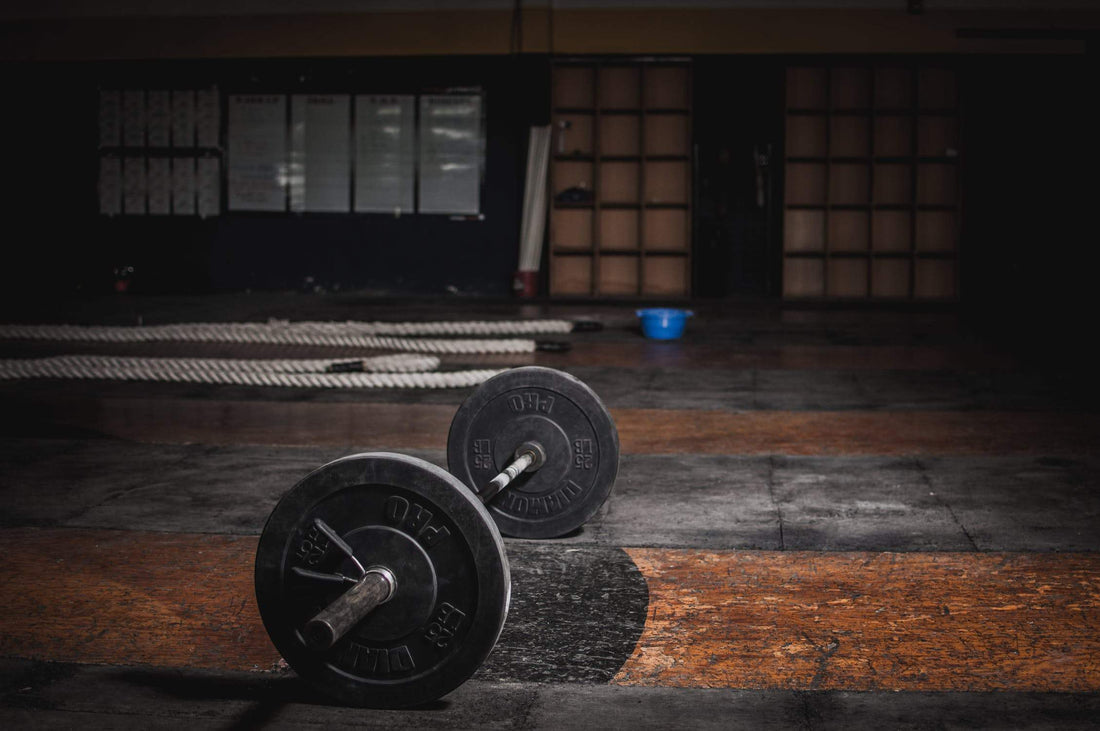In this article we're going to go over what I consider to be the four most important compound movements needed for anyone looking to add muscle and build strength.
1. The Deadlift

The deadlift, in my opinion, is the king of all lifts. This is something I'm sure you could read over and over in articles just like this from strength coaches everywhere.
Truly one lift to the rule them all, the deadlift incorporates not only just the back and legs, but almost every major muscle in your body. Starting at feet on the floor, this lift forces a transfer of power from the ground up. As the athlete pulls the bar, their core, lower back, and grip are all challenged to move this weight on the front plane of the body. The core muscles take a particular beating here as they work antagonistically to the lower back in supporting weight lifted.
I'm not going to dig too far into variations or proper form here as these would be much better suited for dedicated write-ups, but I can say that all-in-all the deadlift has plenty potential make a real man/woman out of the lifter standing behind the bar.
2. The Squat
I know, I know..Big surprise right?
Ah, leg day..
Every training partners favorite day to conveniently "be sick", "resting", or my personal favorite just flat out no call, no show.
Unfortunately for our friend here, the squat is a probably an equally important movement to the deadlift as it contributes greatly to overall fitness, athleticism, balance, etc.
I'm going to throw a curve ball out here though, and bring up one variation specifically that I feel more lifters should be incorporating regularly.

TThe Front Squat
The front squat is the harder variation of the squat in my opinion. Don't mistake this as saying the back squat isn't incredibly technical or valuable as a compound movement, but the front squat adds a layer of challenge that some may find to be a missing link for their overall development.
Since the weight again rests on the front plane of the body, it takes away some of that mechanical leverage that the back squat would have. Lifters will either un-rack the bar in an Olympic grip as shown above, or with arms folded over one another. I prefer the latter to these options as my shoulder mobility isn't always diggin' an Olympic grip each session.
In learning to master the front squat, athletes will find accelerating out of the hole to be where the real challenge begins. The weight will want to roll forward, or pull the athlete with it when driving upward. This may momentarily feel great to he or she under the bar as it will finally stop choking you, or what feels like choking when a heavy barbell is placed against the chest and neck area, but this is not what you will want if you ever want to complete an efficient set of this movement.
The lifter will want to keep their posture straight, chest up, and eyes looking forward as they drive upward into lock-out.
One extra tid-bit of a tip on the head position/line of sight upon ascent with this lift. I find it beneficial on my heavier sets to push my head backward as to look toward the sky or ceiling when driving out of the hole. Perhaps it's just a subconscious cue to propel me toward standing all the way up, locking my knees out, and racking the weight, the same way looking down could perhaps make you more inclined to fail the lift and put the weight down. Give this one a try if you're finding difficulty in the ascending portion of this movement, and let us know if it's helped any.
3. The Overhead Press
This is one of my favorite training days to walk into the gym for. The barbell overhead press is such a technical movement with incredible benefits to strength, mobility, and again strong strong strong core muscles.
That core thing is like a reoccurring theme, huh?
Standing and pressing a weight overhead is probably the most showoff-able feats of strength any person can muster up. This is mainly dude to the fact that standing and pressing a weight over head is much more difficult than seated or lying down as a bench press(which is why our best beach bro didn't make this list).
While we're here I'd like to briefly touch on one variant of the overhead press I find to be additionally challenging(and extra badass if you're asking me), that is the log press.

@pjgruen shown here executing a lock-out with a log that surely added hair to his chest...and possible elsewhere, but I digress.
The logpress is typically done in a clean and press fashion, but I'm just going to brief you on why the latter part of the lift is important to stay relevant.
In the unrack position, standing the log resting on the lifter's front delts, it immediately becomes apparent as to what could make this more difficult to get overhead than the barbell. The sheer size and circumference of the log alone makes the weight stay out further in front of the lifters body. Therefore making it harder to control while striving for a lockout overhead.
To master this specific variation, one will have to master technique,coordination, and sheer power of will to overcome such an impressive feat. I would highly advise that if you have access to a log at your gym, to start using it. Even if just pressing in a rack with the log resting on safety bars set at a good height to get underneath and press from.
4. Atlas stones
Last but not least, I'll be talking about the Atlas stones. In a conversation about four movements required to build an absolute monster, at least one has to be undeniably applicable to functional, everyday tasks.
There are several ways lifting stones could be used to build one's athletic prowess. For example, in Iceland it was tradition to lift a set of stones to qualify to work on fishing boats in years past. Here we're going to talk about Atlas stones specifically, and stone to platform specifically.
You see, what makes these stones so important, and so applicable to an everyday life sort of strength application is that they're quite round, and smooth. As a result, this makes for hard grip positioning. Not everything we're forced to move in life has a nice bar attached to it that we can wrap our hands around to distribute power adequately. Atlas stones will challenge your grip (and pain tolerance as it kindly removes some skin from your forearms during the lift) while picking them up to get to a lapped position. Then the lifter must re-adjust their grip more over top of the stone and roll it up their body, while essentially forcing the stone forward with their abdomen and onto the platform (hopefully).
This completes my list of what I believe to be the four most crucial compound movements to building the best performing body any athlete could ask for, both inside and out of the gym.
If you don't already incorporate these in your routine, or having been slacking a little bit on adding them back in.. just do it. You can thank (more like scream obscenities at) me later.







